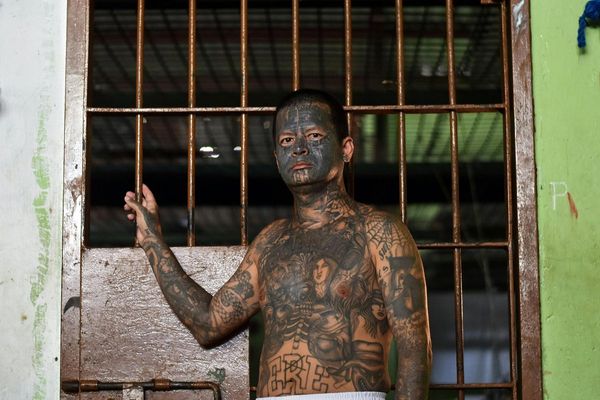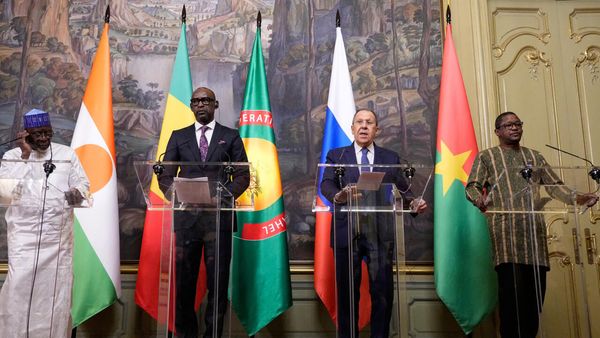
I was born in Sunderland in the 1970s, and my mam and dad lived in a small flat in an old brick Victorian terrace just a short walk from Sunderland general hospital. At that time, all the shipyards and coalmines that employed thousands of people were closing and a once-thriving industrial town was on the decline.
Just eight miles away from Sunderland, inland along the river Wear, there was a village called Washington. Washington Old Hall, in the heart of the old village, was the ancestral settlement of the Washington family, from which the first president of the United States, George Washington, descended. Hence why Muhammad Ali visited in the 1970s and why President Jimmy Carter visited in 1977, planting a tree on the village green. I was three years old, so I can’t remember it.
It was around this village in 1964 that the Washington Development Corporation was formed to build Washington new town. It had a utopian vision of enticing thousands of young families away from the surrounding Victorian towns and pit villages, and placing them in futuristic new homes with central heating, ample space, cavity walls (unfortunately with no insulation) and inside toilets. Indeed, young residents thought they’d died and gone to heaven when they moved in.
My mam and dad moved to Washington not long after I was born. It was a big deal for them, as none of my family had lived outside Sunderland for generations. Our council house was amazing. A monopitch-roofed, two-storey, four-bedroom home with a front and back garden that faced on to a pedestrianised square that was a very safe place to play.
The buzz and excitement were absolutely incredible. We were surrounded by lots of young families just like us. There were kids everywhere playing from dawn until dusk. We all went to the same brand-new, state-of-the-art infant and junior schools that were only a 15-minute walk away for myself and my sisters. On that walk you didn’t cross a single road and you felt unbelievably safe, as you met all of your mates along the way. I didn’t know a single kid who was driven to school in their family car.
Our village had a local newsagent, a greengrocer’s and small convenience store, a post office and a village hall where we hung out all the time – that was where our youth club was. We had a pub (the Honest Boy – it’s still there) and a village club called the Whitehouse (although it didn’t look like the US president’s residence). Our town centre had the Galleries shopping centre, the most innovative in Europe when it was built; an American-style indoor mall that had everything. I bought my first record there in 1979: I Don’t Like Mondays by the Boomtown Rats. I was only five.
I couldn’t believe how green our town was. There were new trees, plants and shrubs everywhere. The landscape architects did an unbelievable job. When you visit Washington now, all of those trees are now huge and it looks greener than ever. We had so many green spaces to play football, and our own field of dreams is still there. Growing up, we must have spent thousands of hours on that field with a football. We adored it.
The planners saw this new town as a utopia, and to us it was. Of course, people are often nostalgic about their childhood and their home town, but I know that for my family, and many others, Washington was a vast improvement on the towns they’d come from. It lived up to the hype.
I salute those who made my new town a reality. I have so much admiration for the young and talented architects, designers, planners and other specialists who realised such a vision. What they achieved was nothing short of an architectural miracle. Think about it: to design and build something so new, for so many, in such a short space of time. New villages blending with old villages. They built new schools, roads, new businesses, shops, a health centre, many village halls and pubs, a town centre and new transport systems – and they did it in a wonderful way.
This month we celebrated the 50th birthday of our shopping centre and the 60th birthday of Washington becoming a dedicated new town.
Of course, Washington has had its critics over the years – some said that the estates all looked the same, for instance. Anything so forward-thinking and revolutionary is going to get some criticism. But these criticisms are often raised by outsiders who have never fully experienced the town and what it is actually like to live there. Washington made me the person, the architect and the designer I am today. The radical and innovative thinking that those talented 1960s designers had when they created my home town is in my blood and is part of my DNA. I’ve loved Washington all my life, I’m a proud new-town boy and I’d love to be part of the 21st-century new towns the Labour government is proposing.
George Clarke is an architect and television presenter







